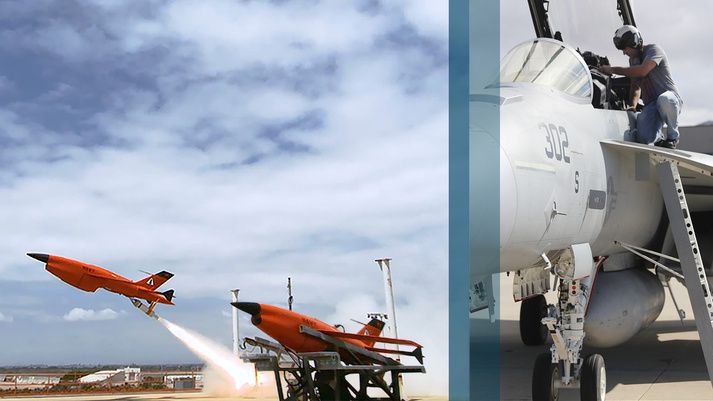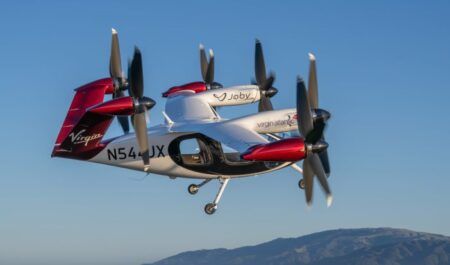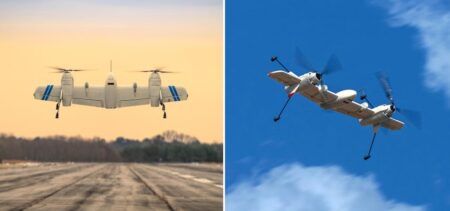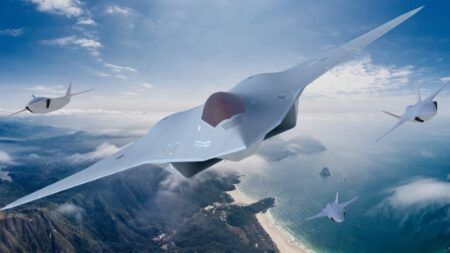BAE Systems and the Department of Defense have successfully completed flight tests of Manned Unmanned Teaming technology at a flight test range in the USA.
Manned Unmanned Teaming (MUM-T) concepts involve a drone supporting and extending a piloted aircraft during missions.
During the flight testing real mission sensors were used on multiple unmanned military platforms and a manned military fighter aircraft to execute a combat mission. A team of unmanned air vehicles (UAVs) worked together to develop and execute autonomously the necessary tactics to complete the mission.
An operator used a Human Machine Interface (HMI) to monitor the mission’s progress and interact with the UAVs as required.
Ehtisham Siddiqui, vice president and general manager of Controls and Avionics Solutions at BAE Systems said, “The development of autonomous technology is crucial to protect our warfighters against emerging threats. This flight test demonstrates our team’s commitment to accelerate the deployment of reliable and innovative manned-unmanned teaming solutions for mission success.”
During this most recent flight test, the team achieved its primary goal of demonstrating collaborative mission execution in an operationally representative environment.
BAE Systems’ HMI was developed through virtual and constructive simulation testing with assistance from pilots and electronic warfare officers. Test feedback from the manned aircraft operator also underscored the maturity of the MUM-T technology offering, highlighting its user-friendly interface, which increases mission safety and lethality.
Matthew Trouve, director of development programs for military aircraft systems at BAE Systems said, “Our expertise in developing and fielding safety-critical flight control systems means that safety and assurance are integrated into our MUM-T architecture and software from the ground up.
“This provides the warfighter with the necessary trust and confidence in our solution to operate in the same environment as autonomous unmanned teammates.”
BAE Systems said its MUM-T algorithms enable decentralized autonomous decision-making and that the architecture can be easily adapted for new missions and incorporate future technology. A software development kit also allows third parties to introduce new algorithms and technologies to support future missions.
Over the next year, BAE Systems will continue development efforts with the Department of Defense and invest in additional capabilities to further mature the MUM-T suite for operational readiness.
The next phase of flight tests will enhance the mission suite’s capabilities and technology, showcasing flexibility and openness for integration on an additional manned aircraft type and another unmanned platform to execute a different mission.
Work for the MUM-T program is based at BAE Systems’ facility in Endicott, New York State.
Related Stories
US Air Force launches manned-unmanned teaming program
UK conducts first manned-unmanned drone flight
Boeing’s Loyal Wingman autonomous teaming drone completes first test flight





